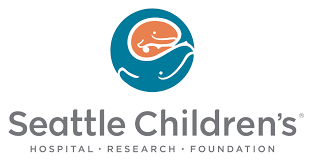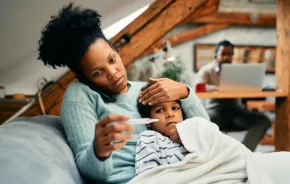
Editor's note: This article was sponsored by Seattle Children's Hospital.
Hard economic times may be hardest on kids, who experience more child abuse in the wake of an economic recession, per research. Child abuse researcher Kenneth Feldman, M.D., the former medical director of Seattle Children’s Safe Child and Adolescent Network (SCAN), helped author one such study. The results, published in the journal Pediatrics, showed that rates of child abuse nearly doubled following the 2008 economic recession compared to the preceding 47 months.
Another study from Boston Medical Center presented at the American Academy of Pediatrics’ National Conference found that each 1 percent increase in the unemployment rate was associated with a significant increase in reported incidences of child abuse one year later.
With the coronavirus pandemic sparking widespread financial hardship and rising unemployment, experts are worried about a similar spike in child abuse. Though it’s too soon to know the impact the current economic strain will have on child abuse, Feldman says, “My communications with colleagues around the country indicate that we’re already seeing more cases than before this downturn.”
After the last economic slowdown, abuse rates took years to return to pre-recession levels, Feldman notes. By 2011, cases of reported child abuse were still higher than they were before the 2008 downturn.
“The longer this goes on and the more financial stress that this puts on families, and the longer parents are cooped up with their children and generally frustrated, the more the risk is likely to rise,” he says.
The perfect storm
While studies based on past recessions can wave red flags, they can’t provide a roadmap for prevention in the current environment. That’s because the coronavirus pandemic is creating an unprecedented situation involving public health, schooling, stay-at-home orders and a slew of added stressors not seen in a typical recession.
“Those who work in child abuse prevention can see the perfect storm brewing in terms of financial insecurity, job loss, worries about food and suddenly having kids home from school,” says Christine Baker, who coordinates the Seattle Children’s Period of PURPLE Crying child abuse prevention program. “We also don’t have teachers, coaches or others who can report signs of abuse seeing kids every day. They just don’t have eyes on kids right now.”
What’s being done to help
Thanks to the work of researchers like Feldman, those who work in child abuse prevention can anticipate the effect this pandemic may have on child abuse. In recent weeks they’ve been working hard to assemble resources to help frustrated parents.
“Knowing what happened after the economic decline in 2008, we have child abuse experts coming together to look at prevention and outreach,” says Baker. Parents participating in the Period of PURPLE Crying, an educational program for parents of newborns aimed at preventing shaken baby syndrome, are already informed about support and resources.
“The Period of PURPLE Crying reaches about 80 percent of families in Washington, and there is an app, so we’re using that program as a platform to get out another layer of information,” says Baker.
Seattle Children’s, UW Medicine, and Harborview Medical Center are partnering to get the word out with a “Take 5” information campaign. (See resources below.) “We created a simple one-page Take 5 handout with five tips. We don’t want to flood parents’ email inboxes or social media feeds right now because there is so much information being directed at parents,” says Baker.
To cope with feelings of being overwhelmed, remember that it’s okay to take a break, and it’s okay to ask for help, says Baker. Caregivers can communicate with kids’ teachers if they feel overwhelmed with schooling responsibilities or need ideas for activities to help kids let off steam. “Don’t be afraid to get the help you need,” says Baker. “Also, check in on a neighbor or friend who is home with children. Simply reaching out can be a lifeline for parents who are struggling.”
Parents who need to leave their children at home in the care of another adult while they work should watch closely for any unexplained bruises, burns and injuries in unusual places such as inside the mouth or in the whites of eyes, says Feldman.
“We know abuse is most likely to occur when kids are left at home in the care of someone who is not a biological parent, particularly someone who is newer to the household,” he says. “If bruises are showing up on babies, particularly those under 5 or 6 months of age, parents should ask questions of caretakers and not accept weak answers or explanations.”
Most parents are doing the best they can, and abuse prevention efforts are intended to offer added support during an extraordinarily stressful time, says Baker. “We need to acknowledge the incredible amount of stress families are under right now. We’re looking at it like parents are in a boat, and they don’t need a manual on how to use the boat. We’re just giving them an oar.”
Child abuse prevention resourcesWhen you’re frustrated, take 5.
Parent Trust for Washington Children, The Family Help Line: 1-800-932-4673 Harborview Abuse and Trauma Center, Support and Tips to Manage Behavior: 206-744-1600 Disaster Distress Hotline: 1-800-985-5990 Crisis Text Line: Text HOME to 741741 for crisis counseling any day and time. Additional resources
|
|
Sponsored by: |
 |











